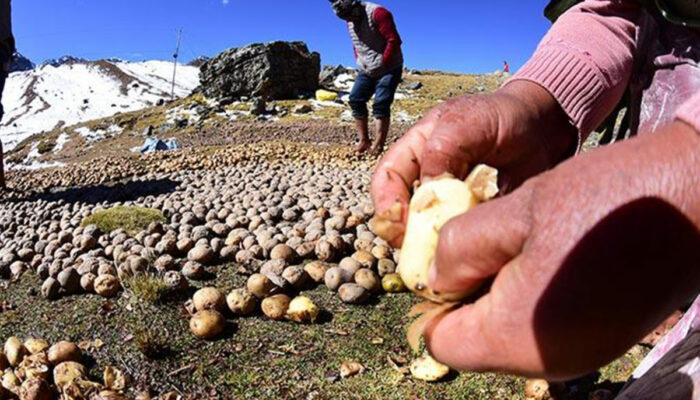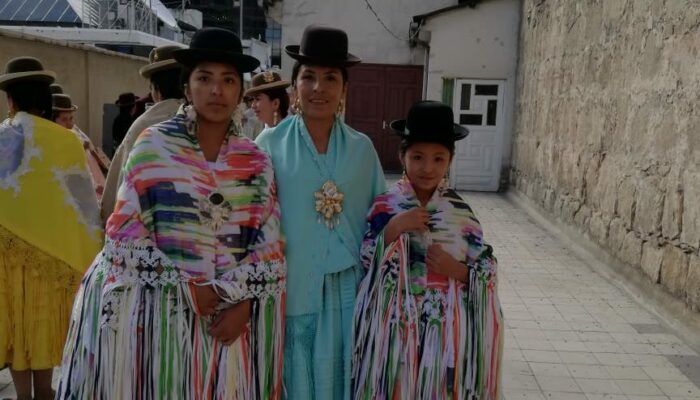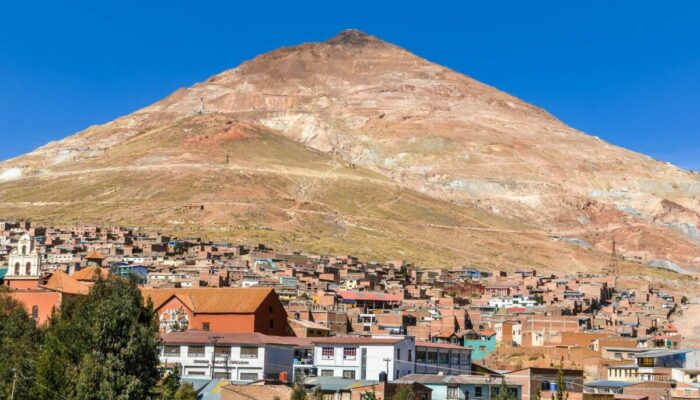Now that you’re familiar with the town of Tarija, let us tell you about its biggest festivity, La Fiesta de San Roque, which pays homage to the saint of the same name.
Although the fiesta takes place on 16 August, the 8-day festivities begin on the first Sunday in September. So this year, Thaki Voyage invites you to join in the processions of chunchos, fervent dances that retrace the episodes of plague and leprosy that affected the region.
In October, in a unique atmosphere of song, wine and traditional music, we want to share with you one of Tarija’s most important celebrations, as well as other events that help give the city its festive reputation!
To the origins of history, let's start at the beginning...
The saint behind this religious event is none other than San Roque, and it is thanks to his charitable identity that he is so important in Tarija. He is said to have put an end to the devastating epidemics of leprosy that were ravaging the region, and was therefore considered the patron saint of the town.
By the way, did you know that Saint Roque is French? Born in Montpellier in 1295, this son of aristocrats grew up in a noble family and when his parents died, he inherited the family fortune. He chose to distribute his inheritance to the poorest of the poor to help the sick and needy. To do this, he travelled to Italy, where the plague was ravaging the population. By taking up his pilgrim’s staff and wearing clothes of the utmost simplicity, he renounced the comforts and privileges of his class.
This man of great generosity was admired by all for his tenacity in the fight against illness. The story goes that he contracted leprosy, after which he hid in a cave where only a dog came to feed him. It was the animal’s licking of his wounds that cured him. This episode highlights the incredible personality of this man and also his love for animals, which is why the Fiesta de San Roque is also the festival of our faithful friends the dogs.
In Tarija, devotion to San Roque dates back to the town’s plague epidemic, the date of which is not known. In order to alleviate the plague, the inhabitants of the region asked for the man’s help, and as a result of their request, the disease ceased.
The entire population witnessed this miracle and decided to pay tribute to the man every year with an incredible celebration.
How is the San Roque fiesta celebrated today?
Fiesta in Bolivia is an opportunity to discover unique dances and music, such as those of the Fiesta de San Roque. The music of Tarija incorporates the region’s wooden instruments, such as the erque, the quenilla and the camacheña. Added to this is the song known as the copla, inherited from Spanish culture and often sung as a duet.
As for traditional dance, it features dancers in colourful costumes known as chunchos. These men wear incredible feather headdresses that cover their bodies and beautiful masks.
During the processions, thousands of chunchos dress as lepers used to, to represent the sick of yesteryear. Their presence is a reminder of the alms they gave. They make a pilgrimage from church to church with the statue of the Patron Saint to reach the San Roque church, founded in 1887 and a veritable architectural jewel. From its penetrating white roof, this religious edifice set on an esplanade gives you a view of the whole town.
The statue of the saint is carried through the main streets, all brightly decorated for the occasion, and as it passes, the faithful ask it to cure their ailments and those of their loved ones. The celebration ends with the devotees and chunchos bidding farewell to San Roque.
This festival, with its colonial origins, is considered a truly artistic and popular event. In 2021, UNESCO declared it an intangible cultural heritage of humanity, as it had already done with the Oruro carnival, to which we devoted an article last February.
Tarija, a city of fiesta
Tarija is one of Bolivia’s most festive towns, because its inhabitants love to dance and sing. This taste for festivities is reflected in the city’s other festivals. The San Roque festival attracts more than 50,000 people a year, but it’s not the only one, as the Fiesta de las Flores, held on the second Sunday in October, is also eagerly awaited!
Dedicated to the Virgen del Rosario, this celebration, like the Fiesta de San Roque, begins with a procession. The procession starts in the Iglesia de San Juan. The throwing of flower petals on the way back to the church is a sight to behold. It may also remind you of Easter Week in Seville, as the two cities have much in common.
Once again we find the Spanish heritage during the Fiesta de Compadres, which is also a must for tarijeños. The origins of this fiesta also lie in Spain, and in particular in Asturias in the north of the country.
In February, the city is once again decked out in music, dance and colour. In this flamboyant setting, the women give gifts to their female relatives and friends. These gifts can be flowers, fruit or food. Doesn’t this remind you of the offerings made to the Pachamama?
This Spanish tradition was adopted by the indigenous peoples and is now an integral part of Bolivian culture, as are the city’s and the country’s other fiestas.
The Fiesta de San Roque is one of Bolivia’s greatest cultural expressions and will give you the chance to discover the town of Tajira. At Thaki Voyage we’re helping to preserve Bolivia’s heritage, which we’d love to share with you. Contact us for your next trip, to Tarija or elsewhere in Bolivia!
Mathilde Leroux



